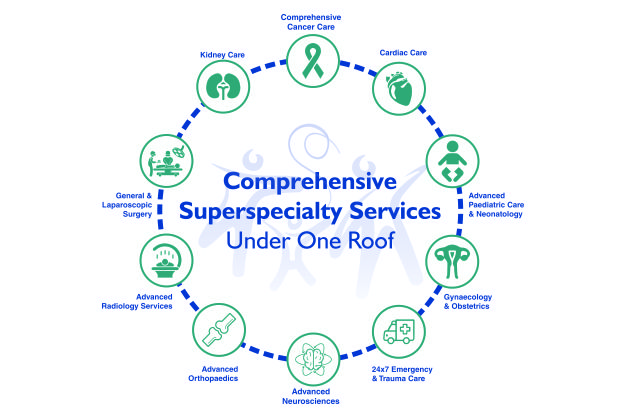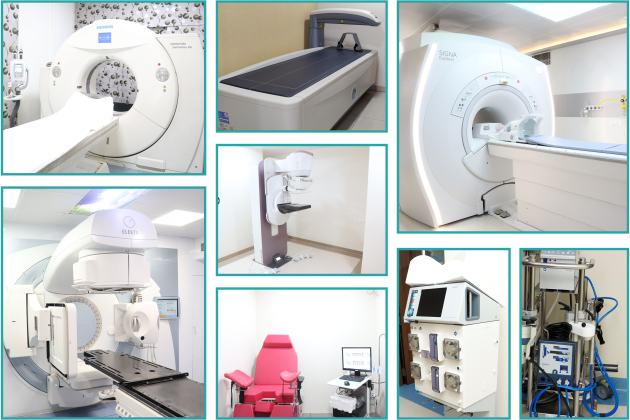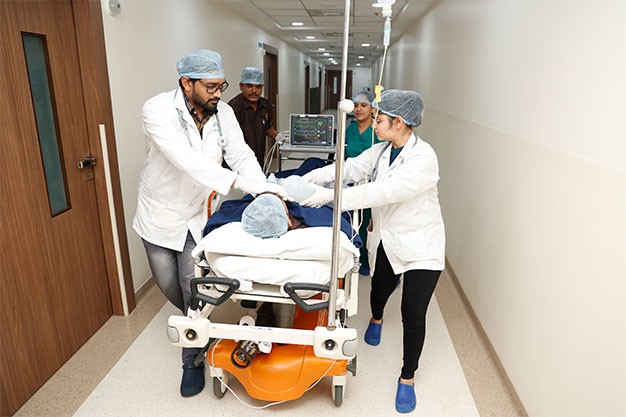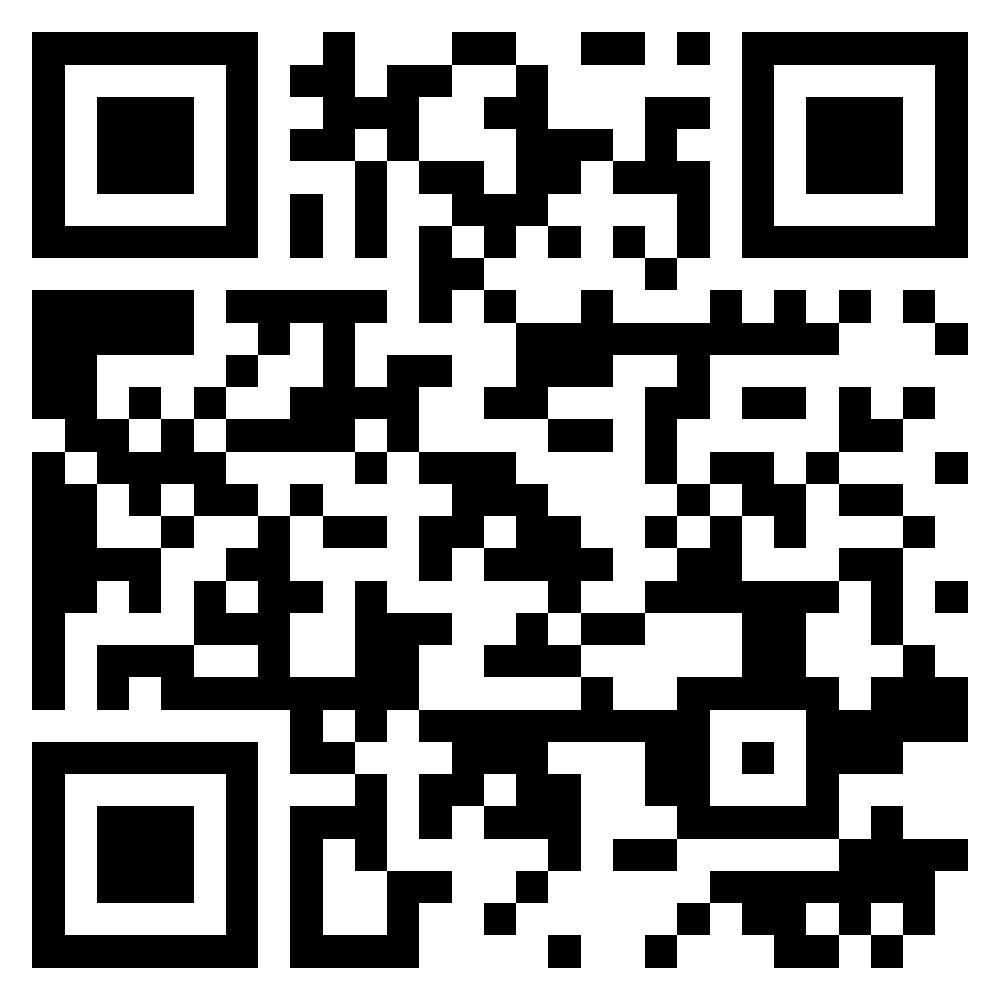Overview
The diagnostic imaging and therapy systems at AIMS Hospital are sophisticated and the radiology groups and imaging facility at the hospital offer the most economic and effective ways to treat the medical issues.
Radiology and imaging services are the key facts in the delivery of high-end diagnostics. Our continuous innovation and development in these vital fields have had a tremendous positive impact on the fight against various medical issues. Radiology has evolved from purely diagnostic devices to interventional technologies. State-of-the-art equipment like MRI, X-Ray, Ultrasound, etc. enable physicians to make diagnoses and plan therapies with greater precision than ever before. Be it 128 slices CT Scan, 3D Tomo Mammography, DEXA Scan, to name a few, ensure that we have the latest equipment to provide a better and earlier diagnosis.
CT Scan

AIMS hospital is equipped with the highest and latest technique in CT Scan machine – Siemens SOMATOM Definition AS (Siemens 3rdGeneration CT Scan).
First installation in India which provides Cardiac CT and RT planning in one single unit
Specifications:
- 128 Slice CT scan
- 80 cm large Bore (Biggest bore in the industry)
- Dual-energy CT
- The table load capacity of up to 307 Kg
- Accurate table alignment & moving lasers to allow highly precise patient positioning
Key features:
- Low dose CARE: “As low as reasonably achievable”(ALARA) principle to reduce radiation dose to the lowest possible level (Very low compared to conventional CT systems)
- Child Care CT: Safe for children: It has the industry’s first 70 Kv scan modes and specific CARE Dose4D curves which lowers radiation. Very much safe for newborns and even for repeat scans.
- Radiation Oncology Planning: Specially designed for advanced treatment techniques such as conformal, IMRT, or stereotactic radiotherapy with faster planning CT. A large bore of 80 cm with a table load capacity of 307 kg opens this CT to all kinds of patients. It has a built V sim option for real-time treatment planning.
- Dual Energy CT Scan: Helps to rectify metal artifact and improves image quality and reporting
- This CT scan can reconstruct all the images in 3D as well.
- CT IVP and CT for Kidney stone analysis: Helps to detect chemical composition of kidney stones (calcium oxalate, uric acid, struvite and cystine) which contributes to a faster and more reliable diagnosis and in deciding the line of treatment.
- CT for Gout Detection: It also helps in the early diagnosis of gout by detecting uric acid depositions in extremities.
- CT Dental: Software for reforming panoramic and paraxial images based on defined reference plane and centerline in real-time through the upper and lower jaw. Best for CT images for implant planning, Assessment of alveolar structure, size of tooth cavities, Visualization of the mandibular canal, and many more. In short, a complete technology for Dental care
- CT Guided biopsy and FNAC
Cardiac CT & CT Angio
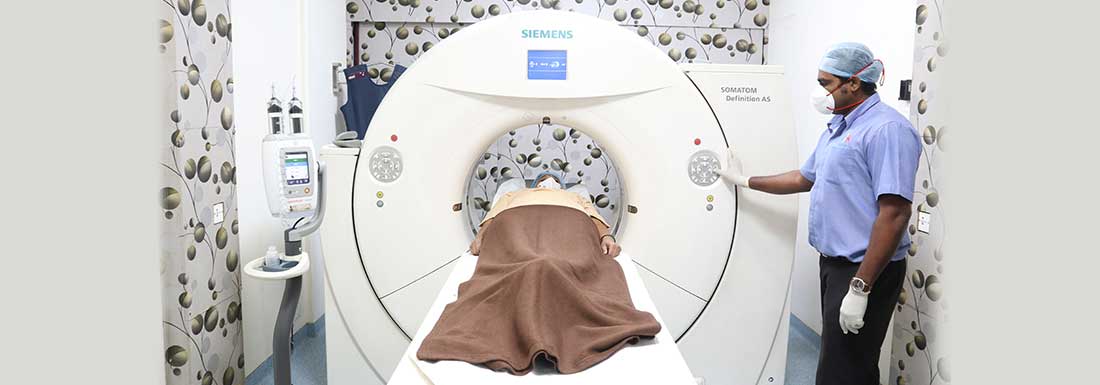
CARDIAC CT
Now, get a comprehensive evaluation of the health of your heart in just a few minutes! Simply walk-in for a Coronary CT Angiography on our Cardiac CT Scanner to identify any blockage in the arteries that supply blood to your heart. The test provides information on whether any blockages are present, the location of the block, percentage of stenosis, and nature of the plaque.
The test is safe and is not an invasive procedure, unlike conventional catheter Angiography. An abnormal report rules out the possibility of a coronary artery blockage in the near future.
Coronary CT Angio is also extremely useful in evaluating the patency of stents and the condition of the bypass graft post-CABG.
A preliminary screening of the arteries can also be done just by evaluating the Calcium Score. A low Calcium Score is synonymous with low clinically significant soft plaques in the coronary arteries. The Calcium Scoring test can be completed in a matter of seconds
CT Angiogram with Digital Subtraction Angiography (DSA):
- CT Aortogram
- CT Coronary Angiography
- CT Carotid Angiography
- CT Cerebral Angiography
- CT Renal Angiography
- CT Peripheral Angiography
- CT Pulmonary Angiography
MRI
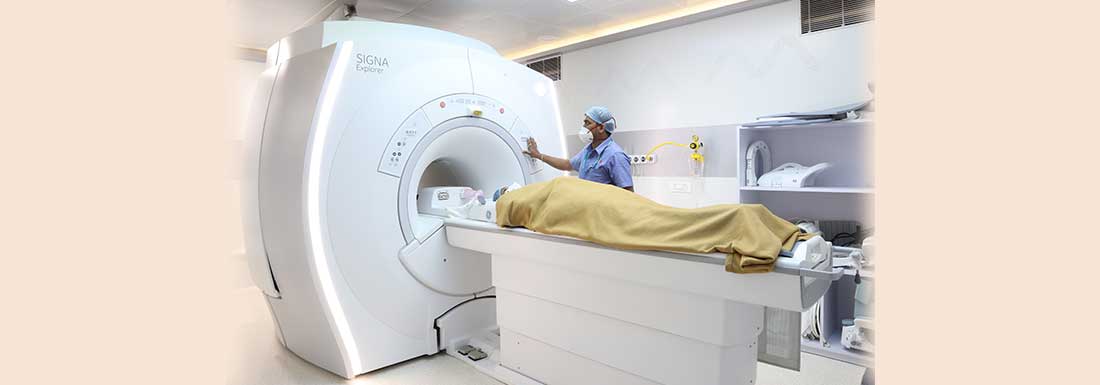
Signa Explorer – 1.5T MRI - Proven performance
Details:
Short-bore, highly homogeneous superconducting CXK4 magnet.
- 16CH OpTix digital-optical receive RF & 33/120 Gradient
- ART - Acoustic Reduction Technique to lower gradient Noise
- Hand-Held Metal Detector & MRI Compatible patient trolley
- Newmatic Noise Guard Headset
- Operator Table with Table up/ down movement.
- Low table height of upto 49 cm for increased and better patient comfort with 70 cm large bore for obese or claustrophobic patients
- Broadening clinical possibilities (e.g. interventional MRI or kinematic studies)
- High image quality
- Faster speed
- Excellent clinical performance
Dedicated RF Coils:
- Head Neck Coil - 16 elements
- Spine Coil – 12 Elements embedded in the cradle
- Anterior Array Coil - 12-ch imaging of the thorax, abdomen and pelvis in conjunction with Express Posterior Array, Offers improved SNR and coverage up to 56 cm in SI direction
- 1.5T FLEX Large 16 Ch
- 1.5T FLEX Medium 16 Ch
- 8-ch Breast Array with Biopsy Grid OEM Multimodality Workstation (Software & Hardware)
- AW Workstation Multi-Modality Workstation
Studies performed in MRI:
- Cardiac MRI & Viability scan
- Brain
- Breast
- Spine
- Shoulder
- Angiography
- Neuro Perfusion / Diffusion
- Musculoskeletal
- Body / MRCP (MR Cholangiopancreatography)
- Arthrogram
3D Tomo Mammography
State-of-the-art 3D Tomo Mammography
New innovation in breast cancer imaging for screening and diagnosis with the Senographe Pristina mammography system. Low dose, patient comfort, standard mammogram, 3D, excellent image quality, and tomosynthesis sweep in 1 compression. The new generation of the Pristina Mammogram machine offers excellent outcomes and efficiency.
A revolutionary screening and diagnostic tool, Tomosynthesis (also known as 3D Mammography), used for early detection of breast cancer that can be done in conjunction with a traditional 2D digital mammogram, is effective for women with dense breast tissue and those with an increased risk of breast cancer. During the 3D portion of the exam, the X-Ray arm which uses a comparable radiation dose to a traditional mammogram sweeps in a slight arc over the breast, taking multiple images in a matter of seconds. The produced 3D image of the breast tissue in a one-millimeter slice provides greater visibility for the radiologist to see tissue details like never before. Tomosynthesis creates a three-dimensional rendering of the breast which results in greater accuracy, earlier breast cancer detection, and a decrease in biopsies and recall rates.
Benefits of 3D Tomo Mammography over Routine Mammography:
- The only FDA approved 3D Mammography that delivers at the same low dose as 2D FFDM; lowest radiation dose of all FDA approved mammograms
- 3D acquisition protocol is made of a V-preview + 3D CC/MLO with 3D in STD Mode
- It captures multiple layers of the breast in a 3-D image, whereas traditional mammograms capture a 2-D image
- The signs of breast cancer can be viewed at early-stage way before symptoms appear which are generally missed in routine mammography
- Better accuracy in determining the size, shape, and the location of breast abnormalities
- It helps you to reduce false positives that mammograms can give
- More comfortable and accurate than routine mammography.
Dexa Scan
A DEXA scan is a non-invasive test that measures bone mineral density to assess if a person is at risk of osteoporosis or fracture. DEXA stands for dual-energy X-Ray absorptiometry in which two X-Ray beams are aimed at the bones. While a regular X-Ray can show changes in bone density (osteopenia) after the bone loss of about 40%; a DEXA scan can detect changes as small as 1%, making it more sensitive and accurate.
We have the best-in-class Prodigy Advance DXA Machine that offers scalability to meet our basic to advanced bone health and metabolic health diagnostic needs.
Benefits :
It delivers with exceptional precision and low-dose radiation.
It provides precise data on soft tissue and bone composition, including bone-mineral density (BMD), lean- and fat-tissue mass, and percentage of fat.
It also streamlines your patient care and practice workflow.
Purpose of the Test
A DEXA scan detects weak or brittle bones to help predict the odds of a future fracture. After an initial DEXA Scan, subsequent scans can be done to compare the progression of bone loss i.e. comparing a baseline scan with a second scan can show if bone density is improving, worsening, or staying the same. A DEXA Scan also can be used to assess how well osteoporosis treatment is working.
How is it performed?
A bone density scan is a quick and painless procedure that involves lying on your back on an X-Ray table so an area of your body can be scanned.
.jpg)
When you have a DEXA scan, you need to lie on your back on a flat, open X-Ray table. You'll need to keep very still during the scan so the images are not blurred.
Other reasons to have a DEXA Scan include:
- A break or bone loss in your spine showed up in an X-Ray.
- A back pain that could be caused by a spine fracture.
- A half-inch or more of height within one year.
- Women who've reached menopause and are not taking estrogen.
- People with a personal or maternal history of hip fracture.
- Men with clinical conditions associated with bone loss such as rheumatoid arthritis or chronic kidney disease.
- People with type 1 (juvenile or insulin-dependent) diabetes, liver disease, kidney disease, or a family history of osteoporosis.
- Those who have high bone turnover show up with excessive collagen in urine samples.
- People who have a thyroid condition, such as hyperthyroidism, or a parathyroid condition, such as hyperparathyroidism.
- Transplant patients who are at increased risk of osteoporosis due to anti-rejection medications they may be taking.
- People who've had a fracture after only mild trauma.
Transesophageal Echocardiography
AIMS Hospital is first in Dombivli to provide Transesophageal Echocardiography (TEE) facility
What is Transesophageal Echocardiography?
Transesophageal Echocardiography (TEE) is a test that produces pictures of your heart. TEE uses high-frequency sound waves (ultrasound) to make detailed pictures of your heart and the arteries that lead to and from it.
Quick Information about TEE
- TEE is a test that uses sound waves to make pictures of your heart’s muscle and chambers, valves and outer lining (pericardium), as well as the blood vessels that connect to your heart.
- Doctors often use TEE when they need more detail than a standard echocardiogram can give them.
- The sound waves sent to your heart by the probe in your esophagus are translated into pictures on a video screen.
- After this test, you may have a mild sore throat for a day or two.
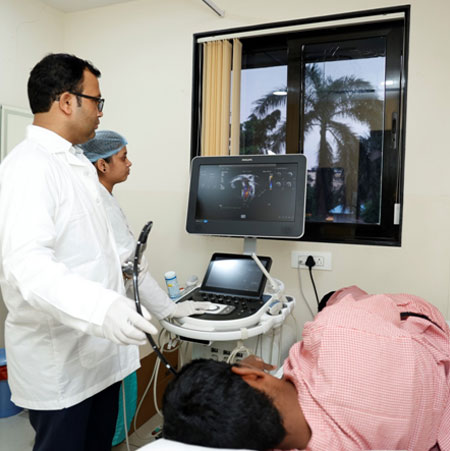
The detailed pictures provided by TEE can help doctors see:
- The size of your heart and how thick its walls are.
- How well your heart is pumping.
- If there is abnormal tissue around your heart valves that could indicate bacterial, viral or fungal infections, or cancer.
- If blood is leaking backward through your heart valves (regurgitation) or if your valves are narrowed or blocked (stenosis).
- If blood clots are in the chambers of your heart, in particular the upper chamber, for example after a stroke.
TEE is often used to provide information during surgery to repair heart valves, a tear in the aorta or congenital heart lesions. It’s also used during surgical treatment for endocarditis, a bacterial infection of the inner lining of the heart and valves.
Holter Monitoring
What is Holter Monitor?
The Holter monitor is a type of portable electrocardiogram (ECG) that records the electrical activity of the heart continuously over 24 hours or longer while you are away from the doctor's office. A standard or "resting" ECG is one of the simplest and fastest tests used to evaluate the heart.
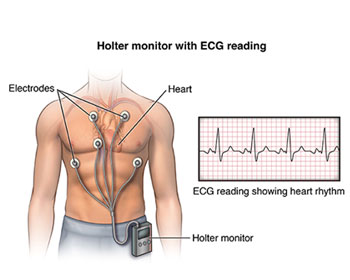 Quick Information about Holter Monitor:
Quick Information about Holter Monitor:
- Electrodes (small, plastic patches that stick to the skin) are placed at certain points on the chest and abdomen. The electrodes are connected to an ECG machine by wires. Then, the electrical activity of the heart can be measured, recorded, and printed. No electricity is sent into the body.
- Natural electrical impulses coordinate contractions of the different parts of the heart. This keeps blood flowing the way it should.
- An ECG records these impulses to show how fast the heart is beating, the rhythm of the heart beats (steady or irregular), and the strength and timing of the electrical impulses. Changes in an ECG can be a sign of many heart-related conditions.
- Your healthcare provider may request a Holter monitor ECG if you have symptoms, such as dizziness, fainting, low blood pressure, ongoing fatigue (tiredness), and palpitations and a resting ECG doesn’t show a clear cause.
- Your healthcare provider may advice you to get either 24 hours / 48 hours / 72 hours / 7 days Holter Monitoring to evaluate your heart condition.
Why might I need a Holter monitor?
Some reasons for your healthcare provider to request a Holter monitor recording or event monitor recording include:
- To evaluate chest pain that can't be reproduced with exercise testing
- To evaluate other signs and symptoms that may be heart-related such as tiredness, shortness of breath, dizziness, or fainting
- To identify irregular heartbeats or palpitations
- To assess risk for future heart-related events in certain conditions, such as hypertrophic cardiomyopathy (thickened heart walls), after a heart attack that caused weakness of the left side of the heart, or Wolff-Parkinson-White syndrome (where an abnormal electrical conduction pathway exists within the heart)
- To see how well a pacemaker is working
- To determine how well treatment for complex arrhythmias is working
How do I get ready for a Holter monitor?
Your healthcare provider will explain the procedure to you and you can ask questions.
You do not need to fast (not eat or drink).
Based on your medical condition, your healthcare provider may request other specific preparation.
Services Offered
Neurodiagnosis
- NCV
- EEG
- EMG
Non-invasive Cardiology Services
- Trans Esophageal Echocardiography (TEE)
- Stress Test
- 2D Echo
- Fetal & Pediatric 2D Echo
- 24 hours / 48 hours / 72 hours / 7 days Holter Monitor
- Dobutamine Stress Echo (DSE)
- ECG
-
Digital X-Ray
-
Sonography
-
USG Guided Biopsy
-
USG Guided Tapping
-
Pulmonary Function Test (PFT)
-
OPG
-
Urodynamic Study
-
Holmium Laser and Lithotripsy (For Kidney Stones & Prostate)
-
Bone Densitometry
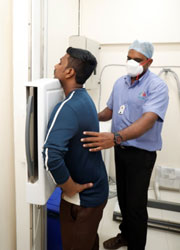
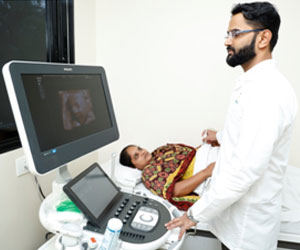
Specialists
ABOUT US
About AIMSDirector's Message
Vision & Mission
Accreditations
Awards & Accolades
Our Network
Phone Directory
Designed by Web Creations 2022. All rights reserved.


